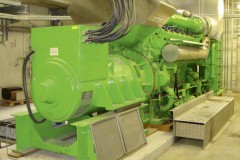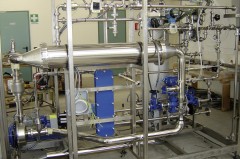Using solid biomass, photovoltaics, solar thermal energy and heat pumps has allowed Austria to reduce CO2 emissions in 2011 by more than 10.5 million tonnes. According to directive 2009/28/ EC the share of energy consumption from renewable sources in Austria is to be increased fur-ther to a level of 34% by 2020. The European Commission’s “20-20-20” targets not only represent a great challenge for energy policy but also generate considerable opportunities for Austrian industry, especially innovative developers and manufacturers of technology.
Austria has extensive know-how in the field of using renewable sources of energy, plus many years’ experience in research, technological development and industrial implementation. By increasing public spending for energy research fourfold in the period from 2007 to 2010, Austria extended the scope of R&D activity considerably. In 2011 public expenditure for energy research reached 120.8 million Euro. Within the framework of research programmes of the Ministry for Transport, Innovation and Technology and of the Climate & Energy Fund, projects are continually supported in the relevant areas where Austria is strong, to secure a national technological lead long-term.
Austria is integrated into numerous research networks of the International Energy Agency through the ministry’s IEA Research Cooperation, and at present participates in 7 of the current 12 tasks of the “IEA-Bioenergy” research programme.
Technologies to exploit renewable sources of energy have proven to be a fairly reliable economic factor even in times of economic upheaval. The renewable energy sector of the economy has performed very favourably during the last few years. In the areas of solid biomass (fuels, boilers and stoves), photovoltaics, solar thermal power or heat pumps Austrian companies generated about 3.3 billion Euro of revenue with more than 27,000 employees in 2011. Austrian technology manufacturers are present and successful in international markets, e. g. two out of three biomass boilers installed in Germany come from Austria.
Today the energetic exploitation of solid biomass represents one of the main pillars of renewable energy usage in Austria. The gross domestic consumption of solid biofuels went up from 142 PJ in 2007 to about 169 PJ in 2011. By using biogenic fuels greenhouse-gas emissions equalling about 9.6 million tonnes CO2 were avoided in 2011.
New bioenergy technologies will play a key role in future energy scenarios. That is why Austrian scientists and companies are intensely concerned with researching and testing innovative technology approaches to using biomass efficiently and in environmentally friendly ways.
Biomass is solar energy stored in the form of energy crops, wood or residual materials such as straw, organic waste or manure. Due to the chemical proximity of biomass to today’s conventional energy sources (oil, natural gas and coal), it is basically possible to make the same products out of renewable raw materials as out of fossil energy scources.
Aided by modern technology, solid, liquid or gaseous biomass can be used to generate heat and electricity or made into chemical products, e. g. synthetic biofuels or hydrogen. Biomass has a great potential for the future to replace fossil energy sources in many industrial processes.



